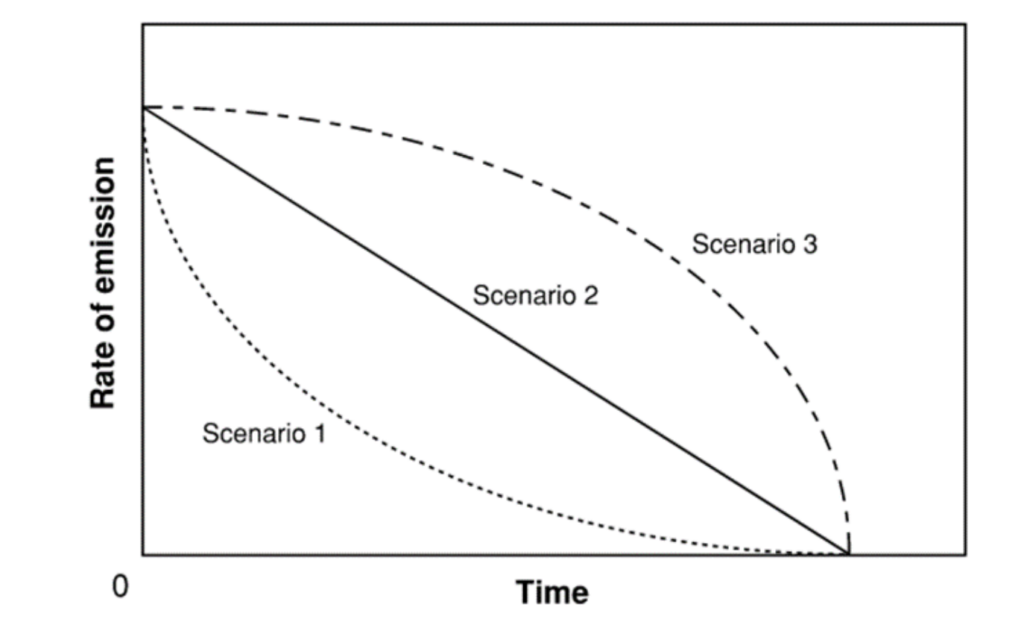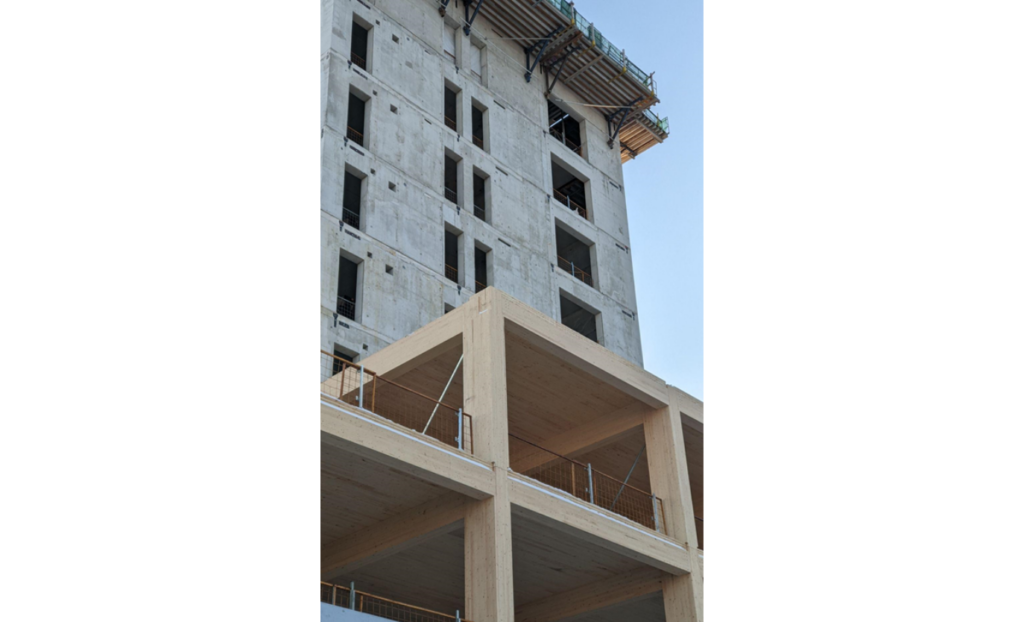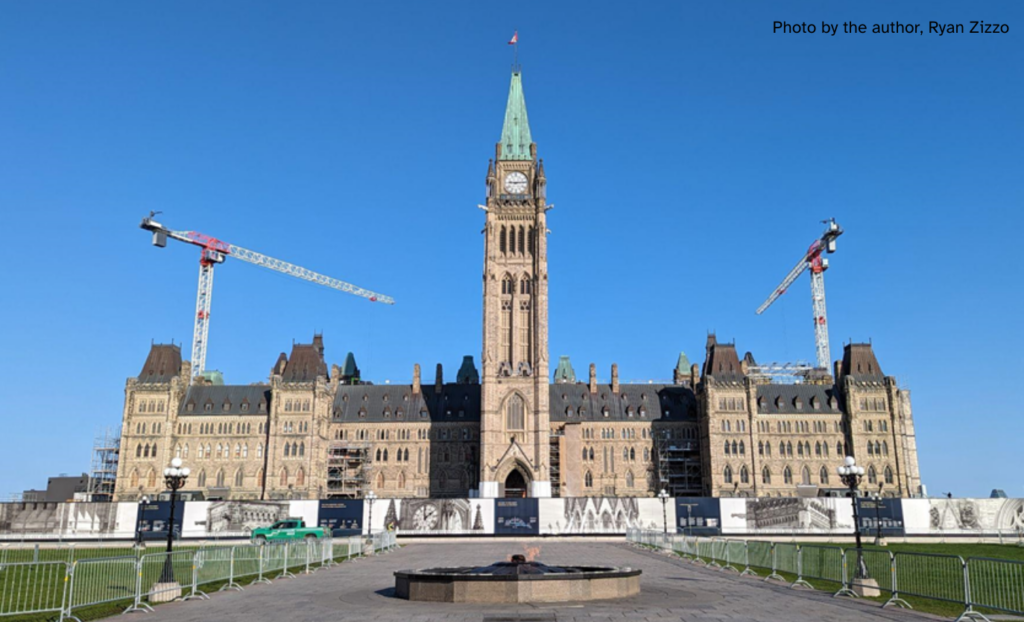Canada’s bounty has made us lazy. As a country, we haven’t prioritized efficiency because we haven’t had to. Over the past century, we’ve built sprawling communities that are extremely costly to service, build, and operate.
These decisions have led to two simultaneous existential crises: housing affordability and the climate emergency.
Luckily, both have simple solutions. Build more and emit less. Unfortunately, construction is responsible for 11% of global emissions. How can we realize a housing boom without resulting in a climate bust? Using three solutions we can turn the tide and solve two crises at once. We can actually ramp up housing constructions and simultaneously build our way out of the climate crisis! Here’s how:
- Step 1: Fix our emissions accounting
- Step 2: Value near-term emission reductions
- Step 3: Prioritize low-emission and carbon-storing material
Let’s break each of these down starting with how we think about emissions.
Step 1: Fix our emissions accounting
If I offered you $1M today or $1M spread over the next 30 years, which would you choose? The answer is ‘today!’ and the reason is interest. We know that money increases over time along with the interest rate. This is called “the time value of money” and is a basic concept in finance.
What if I offered you 1 tonne of CO2 reductions today or 1 tonne of CO2 reductions over the next 30 years? The answer is still ‘today’. The concept is the same and is known as “the time value of carbon”.
Unfortunately, we’re currently not applying this concept when we compare emission-causing and/or reducing projects.
Figure 1 shows three emissions reduction scenarios. Each achieves the same endpoint of reductions at the same time (let’s call it: “net zero by 2050”) however, each comes with very different climate impacts. The climate is impacted not just by the amount of emissions in the atmosphere but also by the duration of time they’re in the atmosphere. Put simply, it’s the area under the curve that matters. The area under ‘scenario 1’ in the figure is a small fraction of the areas under either scenarios 2 or 3. Those areas are the true climate impact that we must minimize. Thus, decarbonization pathways and short-term reductions matter and must be valued.

[1] Source: TNG Lotus – Own work, CC BY-SA 4.0, https://commons.wikimedia.org/w/index.php?curid=126637531
In the finance world, we deal with the time value of money by applying discount factors to future dollars to allow us to compare them to current dollars. This is called “net present value” (NPV) and helps us prioritize decisions that lead to near-term financial gains.
We need to start applying this same approach to emissions: applying discount rates to future emissions to calculate “net present carbon” (NPC). This change will lead to prioritizing emissions reductions in the near term over those that happen over longer periods. The result: less emissions in the atmosphere for less time meaning less climate change.
Step 2: Value near-term emission reductions
We can calculate a typical home’s average NPC using a typical carbon footprint to build and operate that building over a certain period of time (say, 60 years). We can also set annual reducing caps for NPC aligning with climate targets, for example, to be reduced by 50% by 2030 and to reach net zero by 2050. This idea isn’t new: we set similar reducing caps for energy efficiency in our building codes.
What if, when developers and builders design their projects, they had to submit their designs and carbon assessments showing their NPC. For every tonne of carbon their NPC is below the current NPC cap, they get a financial kickback from the government tied to the increasing price of carbon. Lower NPC means a larger financial incentive.
Once developers realize they can make money by prioritizing lower-carbon buildings, the market will shift. Their goal will now be to build as much as possible and as low-carbon as possible. The next question will be: how to reduce NPC most efficiently and thus maximize profit?
Step 3: Prioritize low-emission and carbon-storing material
Consider the building you’re in. Turn off all the lights, heating, air conditioning, and unplug all your devices. Does the building now have a carbon footprint? Of course! Then why are we typically only regulating annual operating emissions associated with energy consumption?
Consider the carbon associated with creating and transporting the building materials. Those emissions are called “upfront embodied emissions” and are responsible for nearly 11% of global emissions, but are mostly overlooked or ignored by most building emissions policies.
Thankfully, this is starting to change, with leading governments starting to roll out embodied emission policies. In early 2023, Toronto became the first city in North America to set caps on the upfront embodied carbon intensity of new city-owned construction. Similar requirements have been adopted in Vancouver, California, and by the federal governments on both sides of the Canada-US border to name a few.
There currently exists much low-hanging fruit when it comes to lower embodied emissions construction materials. Concrete and steel manufacturers are racing to decarbonize. But the holy grail of green building is the regenerative building, one that helps repair the damage of past generations.
To help achieve this, we can create and use carbon-storing materials. Materials that store more carbon in them than they emit during their manufacture and transportation. New concretes are being created using aggregates created from atmospheric carbon. New steels are being made using 100% green energy.
There are also amazing machines that turn atmospheric carbon into a building material with oxygen as a byproduct. They’re called trees. We are seeing a global boom in construction using mass timber. The new ten-storey commercial office building called T3 Bayside by Hines on Toronto’s waterfront is a great example of a mass timber-concrete hybrid building that you can expect to see much more of in the future. And many condo and apartment developers are seriously considering using more mass timber in the future.

[1] Photo by the author, Ryan Zizzo
Oh, and one more thing.
As impressive as trees are, turning them into building materials isn’t necessarily their highest and best use. There’s much to be said about leaving trees as forests so they can maximize habitat creation, prevent erosion, and fix atmospheric carbon into the soil. There’s another carbon-storing material we could use. It’s not as sexy as a big strong coniferous but could be much more impactful. It’s called agricultural byproducts. Think corn stalks, straw husks, and rice husks. These materials are already being grown for food, but their unused byproducts are mostly burned or rot with their carbon being reemitted into the atmosphere.
Why not turn that atmospheric carbon turned agricultural byproduct into the building material of the future? At first blush, it might sound outlandish, but if we could figure out how to put people on the moon, instantly and wirelessly communicate with someone on the other side of the planet through a piece of plastic and metal in our pocket, and wirelessly stream any song ever recorded, surely we can figure out how to build using corn stalks and rice rusks.
Through these simple steps of fixing our emissions accounting, valuing emissions reductions in building design, and prioritizing low emission and carbon-storing materials, we can build our way out of the climate crisis through a building boom of new houses that every Canadian can afford.
Let’s get started – we’ve no time to waste!

